Public Speaking & Presentation Skills
Tutor Notes
Public Speaking & Presentation Skills Essentials is a beginner-level programme that provides general guidance on the basics of communicating effectively with an audience.
About this resource
Key learner outcome and goals
Learning Outcome
Learn how to communicate effectively with an audience
Learning Goals
- Feel calm, focused and in control of your body, mind and senses when speaking for an audience
- Use your voice and body language to enhance your words
- Build a genuine connection with your audience
- Deliver a message that your audience won’t forget
A word about terminology
As a medium, Virtual Reality is not best suited to didactic teaching methods.
However, our intention is that all Bodyswaps modules follow a student-centred constructivist pedagogy. This means creating rich experiences in which learners can explore key concepts and ideas and reach their own conclusions.
This is why our documents speak in terms of learning goals and outcomes, rather than measurable ‘learning objectives’ (a la Bloom’s Taxonomy) per se.
Programme structure
Learner Journey
.svg)
.svg)
.svg)
.svg)
.svg)
.svg)
.svg)
.svg)
.svg)
Characters

.webp?width=720&height=1050&name=leo%20(4).webp)
Leo
Composure coach.webp?width=720&height=1050&name=nola%20(1).webp)
Nola
Performance coach
Jeremy
Charisma coach.webp?width=720&height=1050&name=faye%20(4).webp)
Faye
Content coachLearning Environments
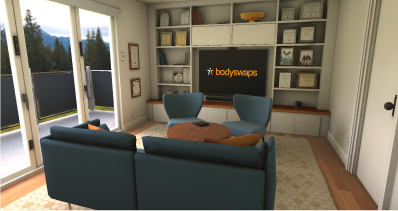
Tutor room - Bodyswaps HQ
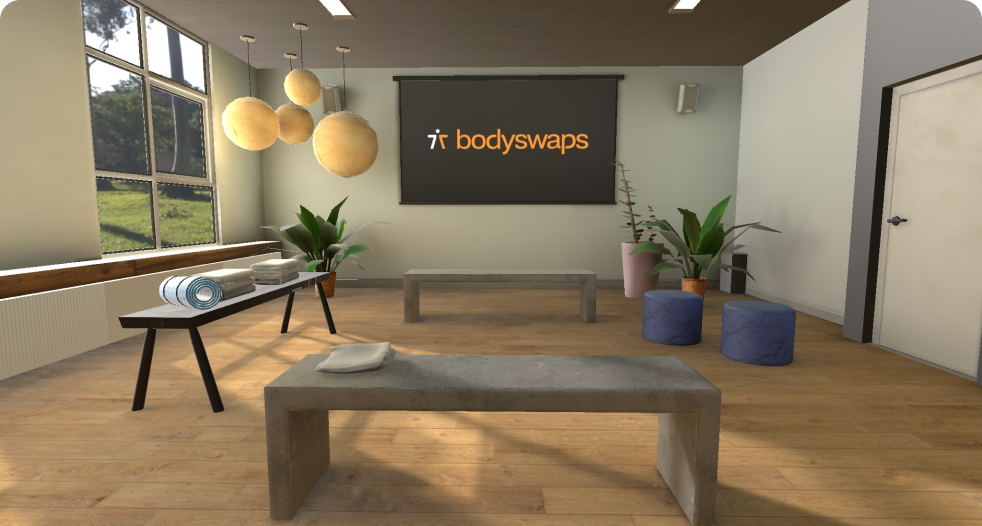
Leo’s mindfulness studio
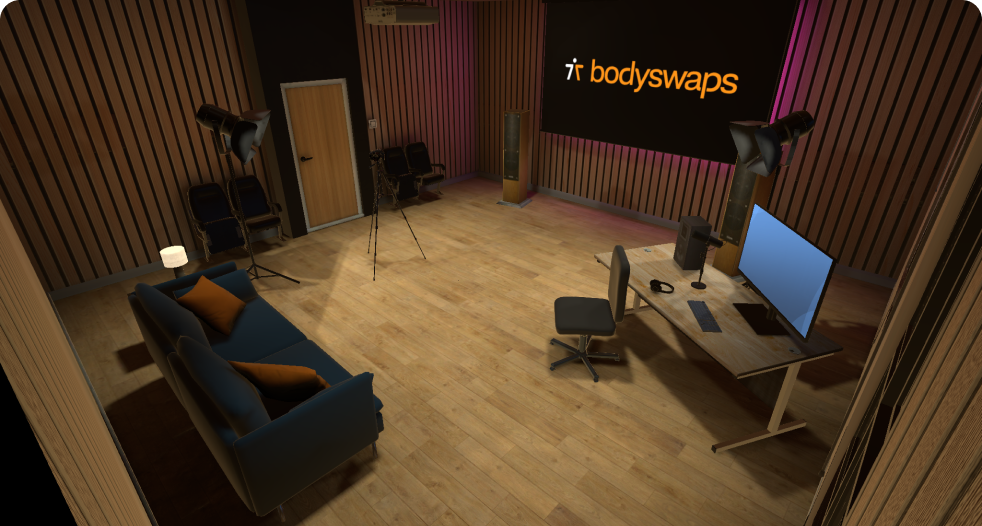
Nola’s recording studio
.png?width=982&height=526&name=Rectangle_23%20(1).png)
Jeremy’s coaching space
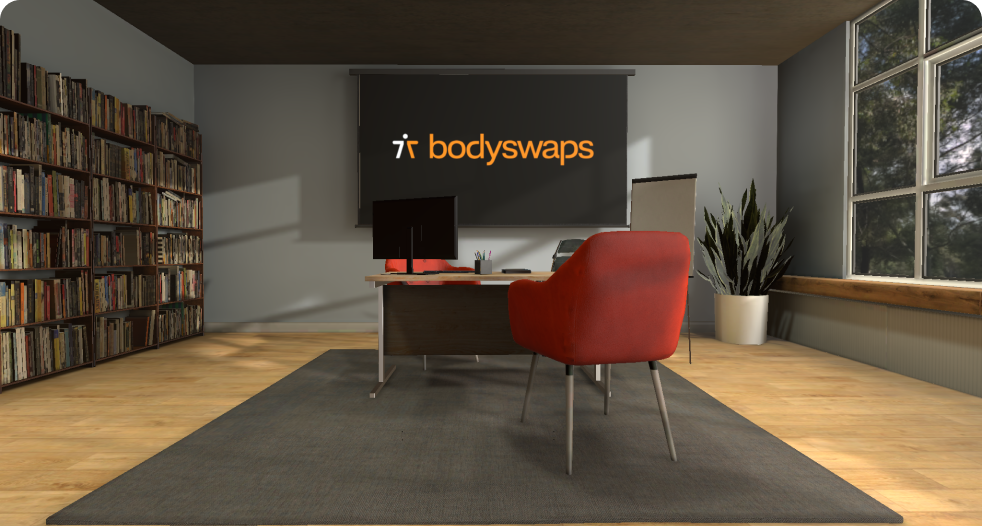
Faye’s study
Practice environments
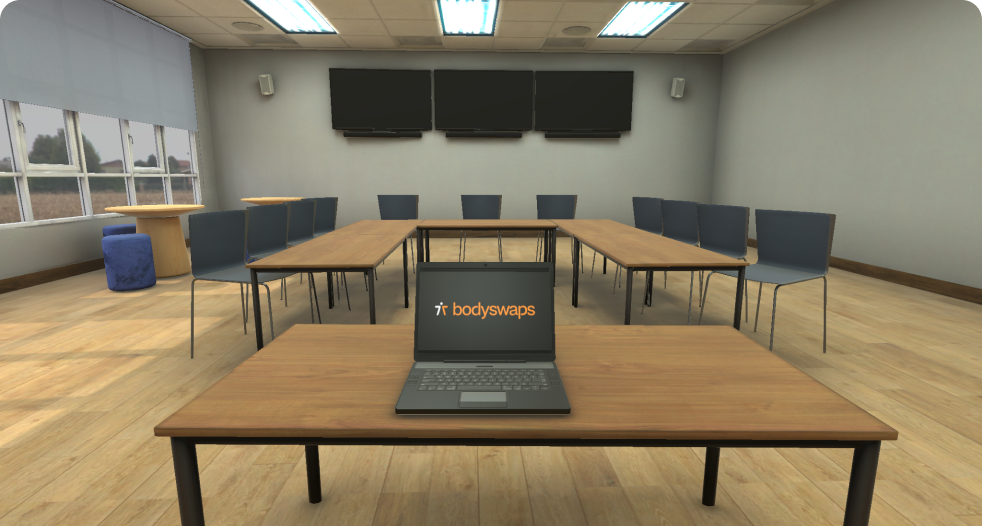
Classroom
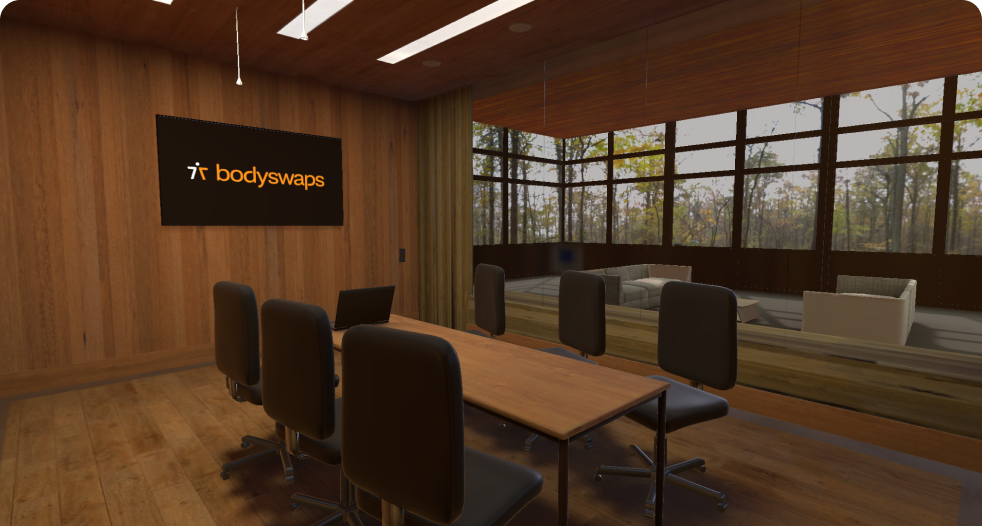
Meeting room
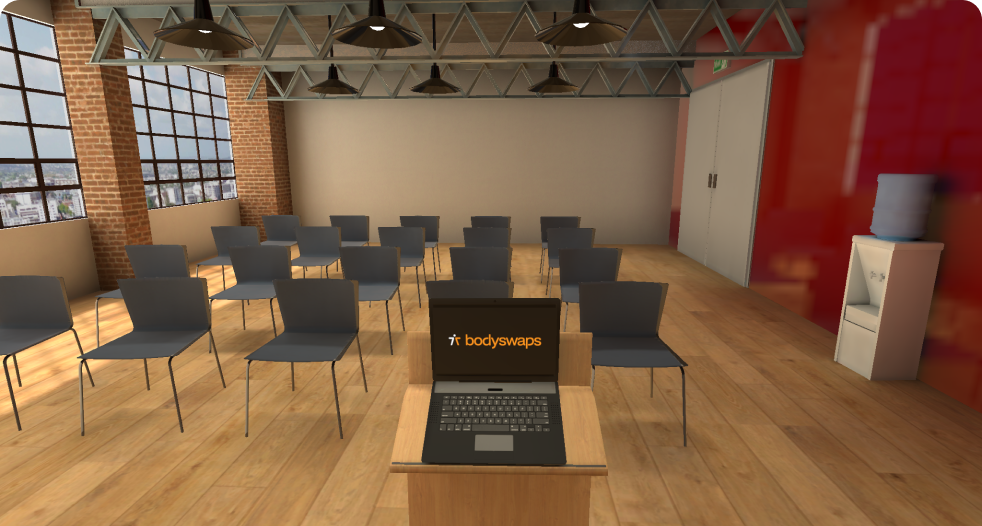
Public forum
Purpose
Location
Characters
Duration
A generic onboarding sequence is provided as standard with virtual coaches Abeeku and Ashley.
The first time learners use Bodyswaps, this onboarding sequence familiarises them with the features of the app, takes them through an avatar selection and embodiment activity and prepares them for the experience to come.
- Find out how this training is different from the rest
- Select your avatar
- Discover your virtual journal
- Learn how to navigate and use the tools and settings
Purpose
Location
Characters
Journal
Duration
This topic introduces the learner to the four categories of skill (Composure, Performance, Charisma and Content) and the virtual coaches who will be guiding them through the experience.
The learner is then asked to complete a short likert-style self-reflection activity to indicate how confident they feel about the key learning points:
- Staying calm, focused and in control
- Using voice and body language to enhance your words
- Capturing your audience’s attention and holding it until the end
- Structuring your presentation in a memorable way
These self-reflection questions will be repeated in the debrief at the end to assess how the learner’s confidence levels have changed.
Note: It is important that the learner completes the introduction and debrief if you wish to receive data about how their confidence levels have changed as a consequence of the training.
Purpose
Learn a strategy for using the five senses to reduce the intensity of a traumatic experience
Location
Characters
Journal
Pre-VR activity
Post-VR activity
Duration
This guided meditation is designed to help learners overcome feelings of anxiety and ‘stage fright’ when speaking in front of others, by turning their attention away from negative thoughts and refocusing on the present moment.
It coaches them through the 5-4-3-2-1 grounding technique recommended by Trauma Research UK for managing anxious thought patterns, which goes like this:
- 5 things you can see
- 4 things you can feel
- 3 things you can hear
- 2 things you can smell
- 1 thing you can taste
Purpose
Location
Characters
Pre-VR activity
Post-VR activity
Duration
In this observation activity, students learn how to connect with their audience through body language by watching Nola’s non-verbal signals while she makes a speech and indicating when they think she is displaying positive or negative body language.
Examples of positive body language include:
- Expansive, friendly gestures
- Upright, open posture
- Eye contact
- Communicative gestures
Examples of negative body language include:
- Anxious posture
- Reading from notes
- Distracting or incongruous gestures
- Crossed arms
Purpose
Location
Characters
Journal
Post-VR activity
Duration
Practise using vocal exercises to warm up and train your voice for better public speaking performances.
In this activity, Nola leads and the learner follows on a variety of ‘vocalises,’ with the aid of real time feedback from the AI-powered audio visualiser.
Vocalises covered include:
- Inhale, exhale
- Big yawn
- Boh, boh, boh, boh…
- La, la, la, la…
- Weee ahhh, weee ahhh…
- The lips, the teeth, the tip of the tongue…
- Pa ta ka, pa ta ka, pa ta ka, pa ta ka…
- Ka ta pa, ka ta pa, ka ta pa, ka ta pa…
- Red leather, yellow leather, red leather, yellow leather
Purpose
Location
Characters
Journal
Pre-VR activity
Duration
In this experimenting and modelling activity, students practise impromptu speaking and explore how varying their volume, intonation and inflection can affect how clearly others understand their message.
This activity is not prescriptive about how learners ‘should’ speak. Rather, it helps them to find their own most effective personal prosody by recording themselves speaking with various different deliveries - using the real-time audio visualiser as a guide.
They then ‘bodyswap’ to watch their performances back from the audience’s perspective in order to determine which volume and intonation has the impact they most prefer.
For each experiment, learners are given a topic to discuss, drawn at random from a bank of questions. These are:
- If you could change one thing about yourself, what would it be?
- Describe your earliest memory.
- Describe the most disgusting thing you ever ate.
- Describe the best holiday you ever went on.
- Describe your greatest fear.
- If you could visit anywhere, where would you go?
- What would your superpower be?
- Are you a cat or a dog person?
Purpose
Location
Characters
Pre-VR activity
Post-VR activity
Duration
In this experimenting and modelling activity, learners explore how speaking rate affects clarity, diction and coherence of speech.
And they see how three successful speakers (Martin Luther King Junior, Steve Jobs and Tony Robbins) use different rates of speech to connect with their audience in different ways and find out which of these speakers most represents their own natural speaking style.
Purpose
Location
Characters
Journal
Pre-VR activity
Post-VR activity
Duration
Being authentic is about presenting in a way that shows your audience your genuine self. But what if you don’t know who your genuine self is or how to express that in your presentations?
In this diagnostic activity, learners answer three questions (out of a possible six) to determine what kind of speaking style they are naturally drawn to:
- Teacher
- Motivator
- Expert
- Influencer
This is a self-reflective exercise designed to help learners utilise their natural strengths when planning a speech, instead of trying to pretend to be something they’re not.
Being authentic helps a speaker to connect with their audience and speak with more confidence.
Purpose
Location
Characters
Pre-VR activity
Post-VR activity
Duration
How you structure the content of your speech can have a big influence on how successfully you engage your audience, hold their attention, get your message across and more.
The best speeches have a beginning, a middle and an end. And there are lots of different ways you can approach this.
In this mini-game, we look at three strategies for structuring the beginning, middle and end of speeches when speaking to:
- Inform
- Inspire
- Influence
Learners choose a purpose for their speech and are then challenged to pick the beginning, middle and end strategies that work best for them. Feedback provides illustrations taken from three TED Talks designed to inform, inspire and influence.
Purpose
Location
Characters
Journal
Duration
Pre-VR activity
Duration
In this simulation, learners choose their environment and then practise speaking in front of an audience of 12 virtual peers. For this, they can upload their own slides (prepared in advance) or choose from three ready-made speeches:
- Real life bodyswap
- Three little words
- My earliest memory
When they’re ready, their speech will be recorded and then they can switch positions with an audience member to see how their performance looked through their eyes.
Analytics provide feedback and guidance on how to improve their speaking in future, with metrics like:
- Duration
- Pace
- Volume
- Intonation
- Hand gestures
- Eye contact
Purpose
Location
Characters
Duration
The primary function of the debrief activity is to encourage the learner to reflect and self-report on their confidence levels following completion of the training.
Here, the learner is asked the to complete the same likert-style self-reflection activity they were given in the introduction. Questions relate to how confident they now feel about the key learning points:
- Staying calm, focused and in control
- Using voice and body language to enhance your words
- Capturing your audience’s attention and holding it until the end
- Structuring your presentation in a memorable way
Their post-training scores are then compared with their pre-training scores and recommendations made about topics they might want to repeat and new topics from Advanced Public Speaking & Presentation Skills (coming soon).
Purpose
Duration
Before the learner leaves the module, they are asked to complete a short survey about their experience.
This survey is not compulsory, but the data helps us to assess the effectiveness of our product and identify any areas that need improvement. Clients also find it beneficial when assessing ROI.
The questions are:
- The experience helped me identify elements of public speaking I could improve on.
- I have a better understanding of public speaking skills now.
- Capturing your audience’s attention and holding it until the end
- I feel more confident about public speaking now.
- I found this learning experience more effective than traditional alternatives.
- I would recommend this experience to others.
